One of my jobs on this Sabbatical is to write an essay on John Wilson Carmichael. He was a nautical painter whose work still sells well, see this art dealer’s website. I am more interested in his etchings of the Newcastle and Carlisle Railway; if anyone is interested I’ll post a copy of my essay on the blog (if my tutor’s nice about it!). On Tuesday 6 May I went to the Hancock Library at the Great North Museum to look at his etchings “Views on the Tyne” – here is one of them on the Newcastle Libraries flickr site. After that, and a coffee, Julie and I walked into the centre of town, and I went to have an explore of St Thomas. Just beside Haymarket Metro station, with a church website.
The first Chapel of St Thomas a Becket was a pilgrim chapel built on the old bridge over the Tyne. It may have been built as an act of penance by Hugh de Melville (one of the knights who murdered Thomas). Many years ago I went to the Precentors’ Conference at Canterbury Cathedral – a Cathedral precentor is the ‘pre-cantor’, the one who sings first – and their conference was always excellent. The highlight of the Canterbury one was a candlelit walk round the Cathedral, with lay clerks of the choir providing the music, incense adding to the atmosphere, and an opportunity to pray at the place of Thomas’ martyrdom (one of those special spiritual moments in life).
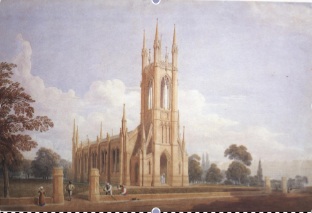 The present church was built between 1827 and 1830. The architect was John Dobson, who built a lot of Newcastle, including Grainger Market and Central Station. The picture above has been scanned from John Dobson, Newcastle architect, 1787-1865, by Tom Faulkner and Andrew Greg, Newcastle: Tyne & Wear Museums Service, 1987. Dobson used John Wilson Carmichael “to work up his perspective drawings into dramatic and effective watercolours. “The perspective of St Thomas’s Church of c.1827 is the first surviving drawing of the partnership of Dobson and Carmichael, and in this the talent of an accomplished landscape watercolourist is more evident” (page 10).” Dobson gets his blue plaque.
The present church was built between 1827 and 1830. The architect was John Dobson, who built a lot of Newcastle, including Grainger Market and Central Station. The picture above has been scanned from John Dobson, Newcastle architect, 1787-1865, by Tom Faulkner and Andrew Greg, Newcastle: Tyne & Wear Museums Service, 1987. Dobson used John Wilson Carmichael “to work up his perspective drawings into dramatic and effective watercolours. “The perspective of St Thomas’s Church of c.1827 is the first surviving drawing of the partnership of Dobson and Carmichael, and in this the talent of an accomplished landscape watercolourist is more evident” (page 10).” Dobson gets his blue plaque.
I failed to photo the doors, which are a 1996 addition, to quote their website “designed to make the building more open to passers by and carry a proclamation to the city (Amos 5:15): “Hate Evil, Love Good – Do Justice at the Gate”. Very good sentiments, but still far too many people walk past. How does the church really open itself up to the thousands who walk past, or sit on the grass and the benches eating their lunch?
When you do walk in, it is such a disappointment. Need I say more? Lots of grotty noticeboards, a shop on one side that needs a makeover, a plastic coffee bar on the left. Hideous plastic chairs around a round table. The prayer area has another circle of mixed chairs. The nave altar – I assume this is some sort of Easter message – and when you turn round and look west …
I know, it is so much easier to criticise than it is to do anything about it. They are planning to reorder the North Vestry and make it a room that can be rented out. Their heating has failed, so they are looking at eco-options for new underfloor heating. They want to remove some pews, add in loos (including an accessible one) in the North Aisle, and refurbish the kitchen.
They recognise, to quote a notice “We have a gem here, and nobody realises! Did you know that we are only the place outside of London to have a memorial to the George Cross Island Association, the Malta Window? That we were the first place in the UK to a woman presiding at Communion? [Our non-conformist friends might argue with that!] That the historic Victoria Tunnel passes underneath the church? [That is superb – look it up]. We plan to produce new literature to encourage many more groups to visit and appreciate our wonderful oasis in the centre of Newcastle.” My plea to them is – do the job properly. Look at the quality of Blackwell’s bookshop across the road, your bookshop needs to be as good. Look at the quality of a Costa, your coffee needs to be as good. Look at the publicity produced by the University, your publicity needs to be as good. That is not easy when our budget is always smaller than everyone else’s – but there should be money around for such a historic church in such a wonderful setting. I tried to give them £10 in a Gift Aid envelope – and had to hand it to the shop attendant when it wouldn’t go in the donation box (“where there is no vision the people perish” Proverbs 29.18).
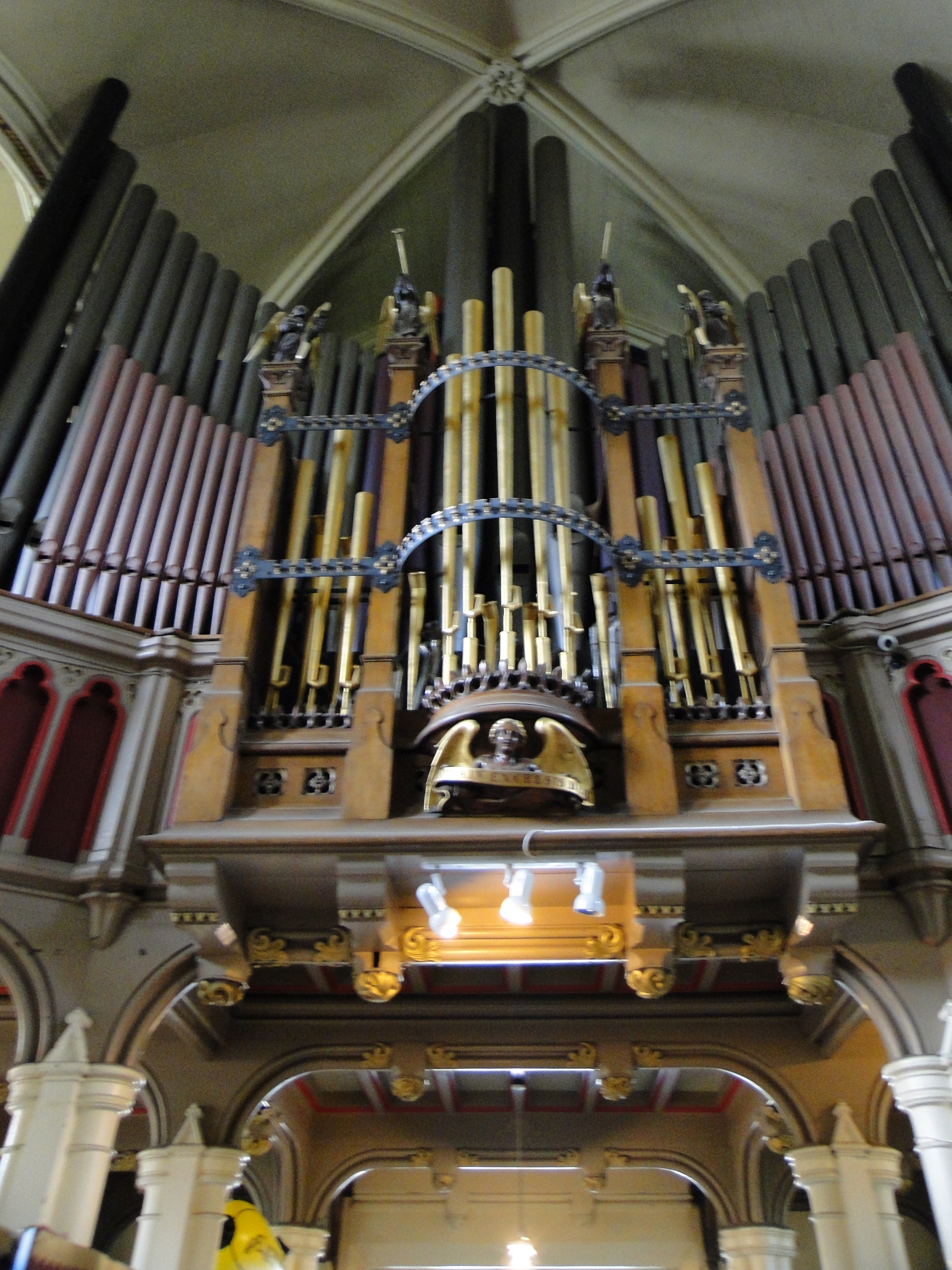 What do we have at the moment? A very professional leaflet about the Harrison and Harrison organ of 1961, complete with the wonderful line “By 1961 the winds of change were blowing through the rather stuffy halls of the English organ establishment” (sounds like the start of a Cecil B. DeMille film). The first organ was an Elliot and Hill, 1832 – “The instrument is on the largest scale and possess the latest and most scientific improvements and its superior, it is believed, is not to be found in any parish church north of the City of York” (Newcastle Courant). Originally blown by hand, in 1872 there is a note that the Vestry Clerk was instructed to contact the Water Company to enquire about the possibility of metering the supply to the water engine. By mid 1879 “the hydraulic blowing apparatus being inefficient” meant that the bell ringer, Joseph Robson, was paid 2/6 per service for raising the wind by hand. A Vincent organ was installed in 1901, another new one in 1931, and the current one in 1961. “It was regarded as controversial.” There is nothing on their website to suggest it is ever used for recitals, or for more than accompanying one service a week (no mention of a choir or a Director of Music). The church music scene across the country has changed in my lifetime.
What do we have at the moment? A very professional leaflet about the Harrison and Harrison organ of 1961, complete with the wonderful line “By 1961 the winds of change were blowing through the rather stuffy halls of the English organ establishment” (sounds like the start of a Cecil B. DeMille film). The first organ was an Elliot and Hill, 1832 – “The instrument is on the largest scale and possess the latest and most scientific improvements and its superior, it is believed, is not to be found in any parish church north of the City of York” (Newcastle Courant). Originally blown by hand, in 1872 there is a note that the Vestry Clerk was instructed to contact the Water Company to enquire about the possibility of metering the supply to the water engine. By mid 1879 “the hydraulic blowing apparatus being inefficient” meant that the bell ringer, Joseph Robson, was paid 2/6 per service for raising the wind by hand. A Vincent organ was installed in 1901, another new one in 1931, and the current one in 1961. “It was regarded as controversial.” There is nothing on their website to suggest it is ever used for recitals, or for more than accompanying one service a week (no mention of a choir or a Director of Music). The church music scene across the country has changed in my lifetime.
The stained glass is rather uninspiring – and looks odd because the balcony divides the north and south windows in half. Apparently they are by the studio of George Joseph Baguley (1834-1915), who was also churchwarden here for 43 years.
 The most striking window is that installed in 2000 by Helen Whittaker in memory of the Malta convoys pin WW2. Do have a look at her website and perhaps download this pdf about these windows. The photos are much better than this one! http://www.helenwhittakerart.com/pdfs/19_st_thomas_newcastle.pdf
The most striking window is that installed in 2000 by Helen Whittaker in memory of the Malta convoys pin WW2. Do have a look at her website and perhaps download this pdf about these windows. The photos are much better than this one! http://www.helenwhittakerart.com/pdfs/19_st_thomas_newcastle.pdf
I have a link to the Malta Convoy’s through HMS Barham, though only because we share the same name. She was sunk on 25 November 1941 off Malta – full story and pictures here. Gareth and I went to the service in Westminster Abbey in November 2011 when the last few survivors processed the standard for the final time to the tomb of the Unknown Warrior. The Nave was full and you could have heard a pin drop as six old men came forward – another occasion I will never forget. The HMS Barham Association also has a website.
I wish the good folk of St Thomas well. For the next post we’ll photo the war memorials around the church.

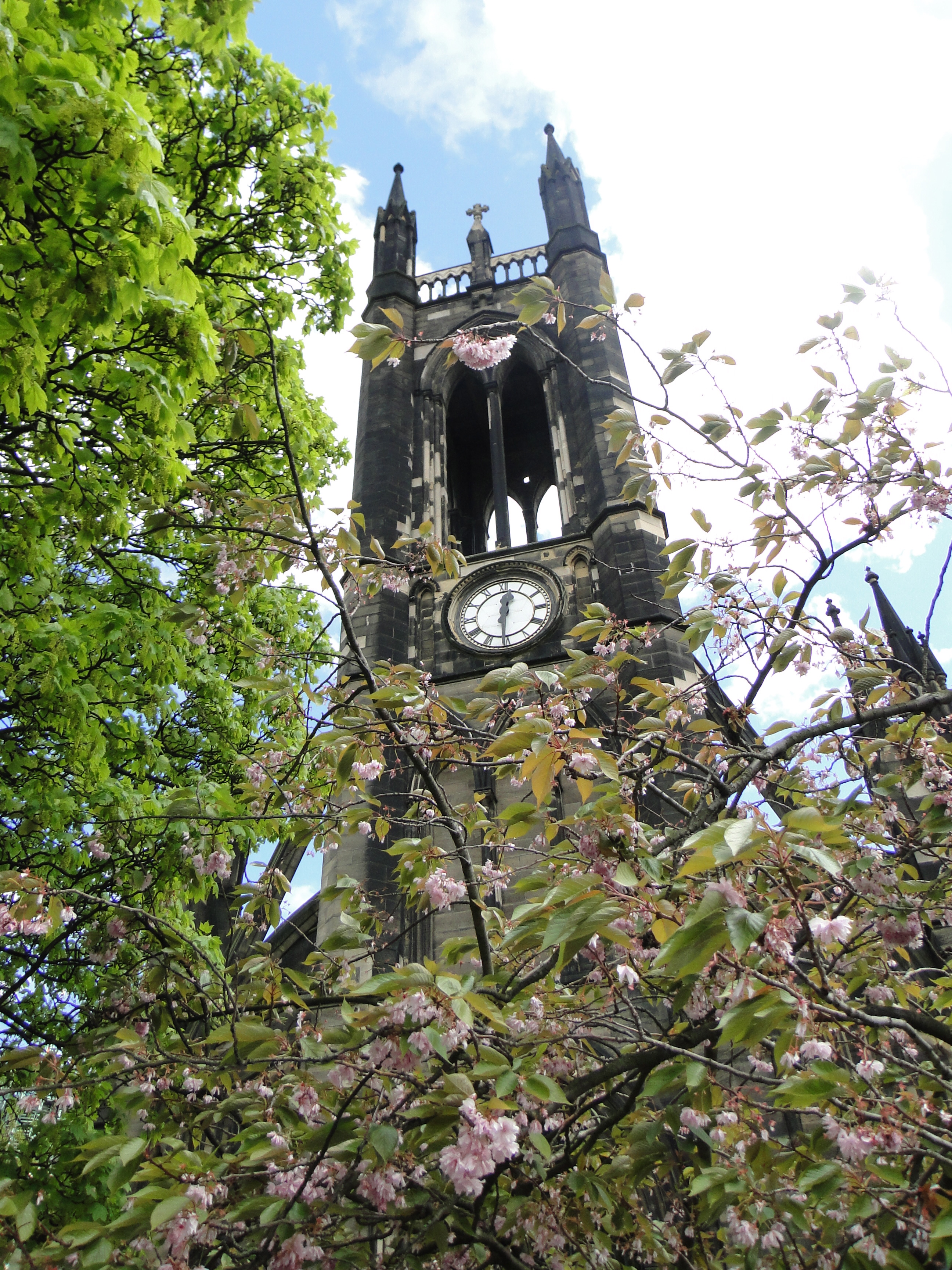
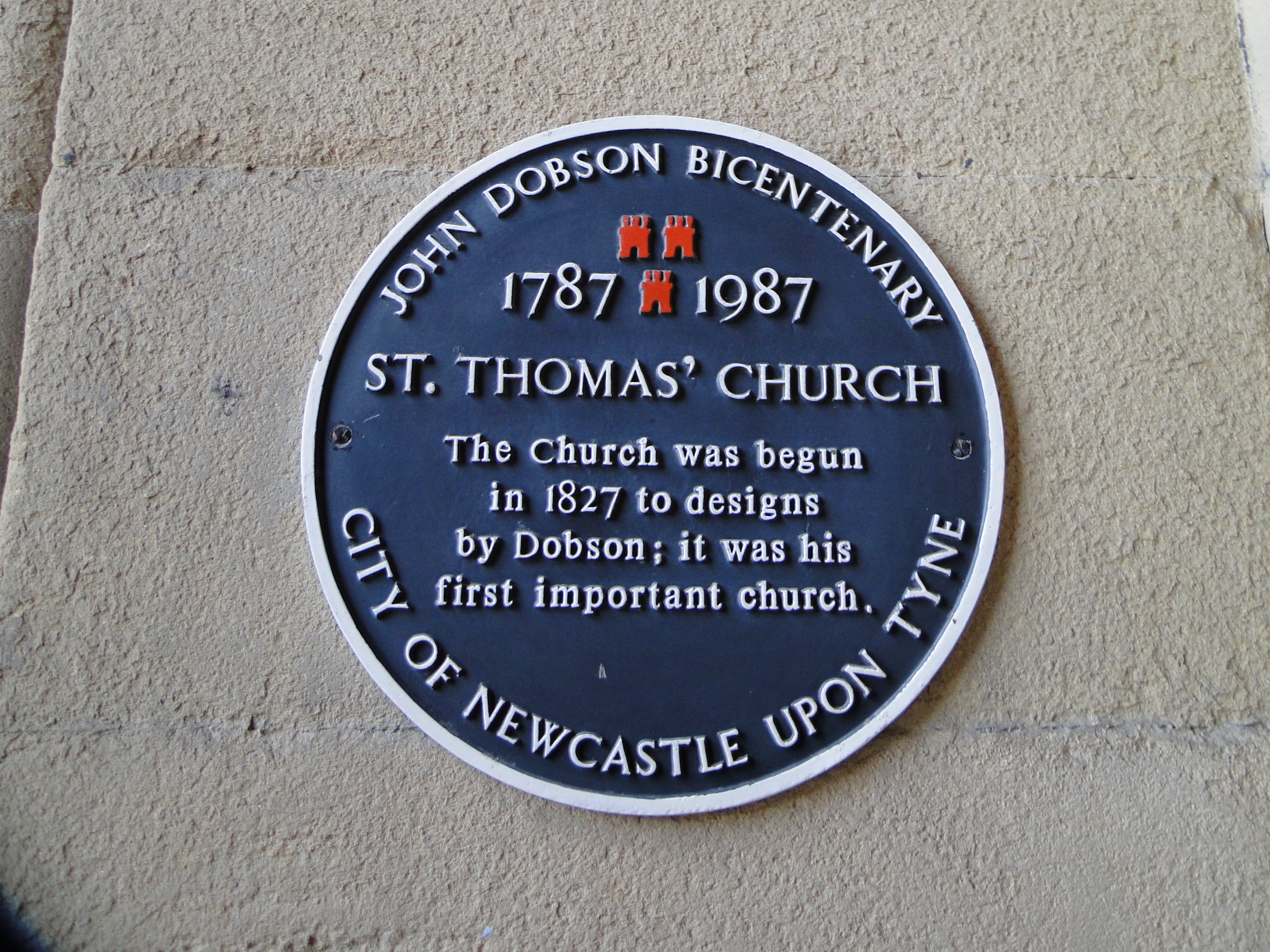
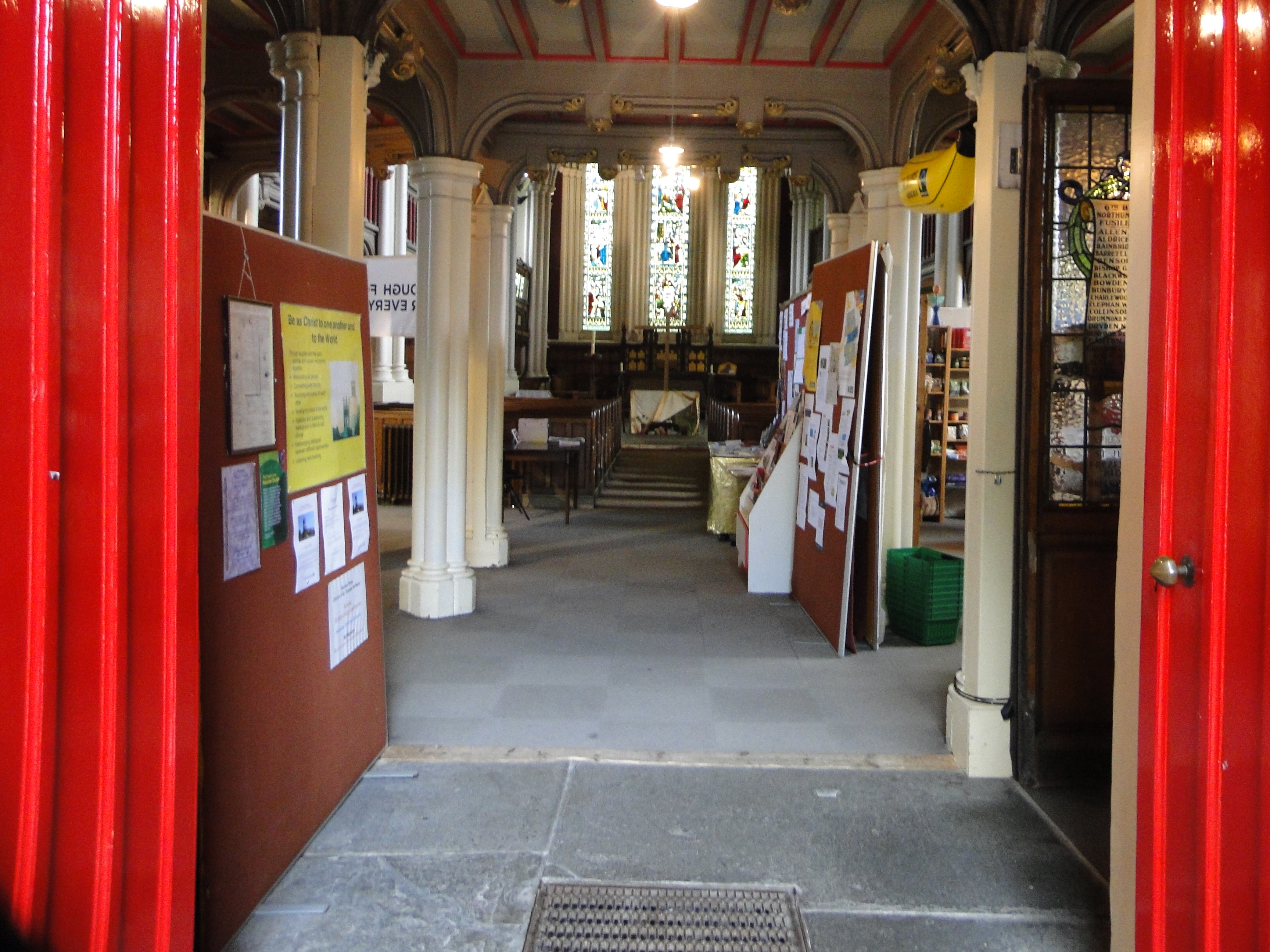
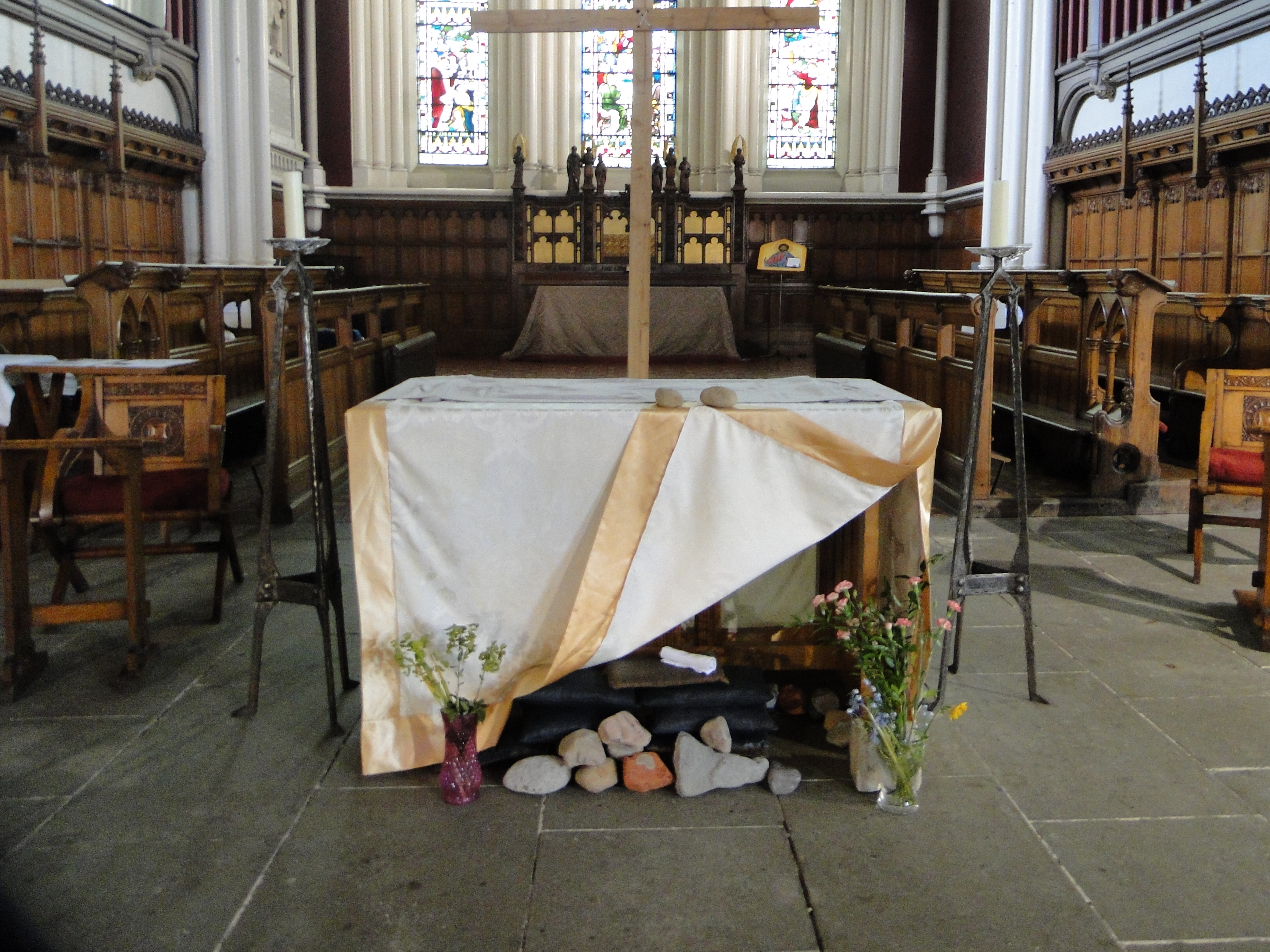
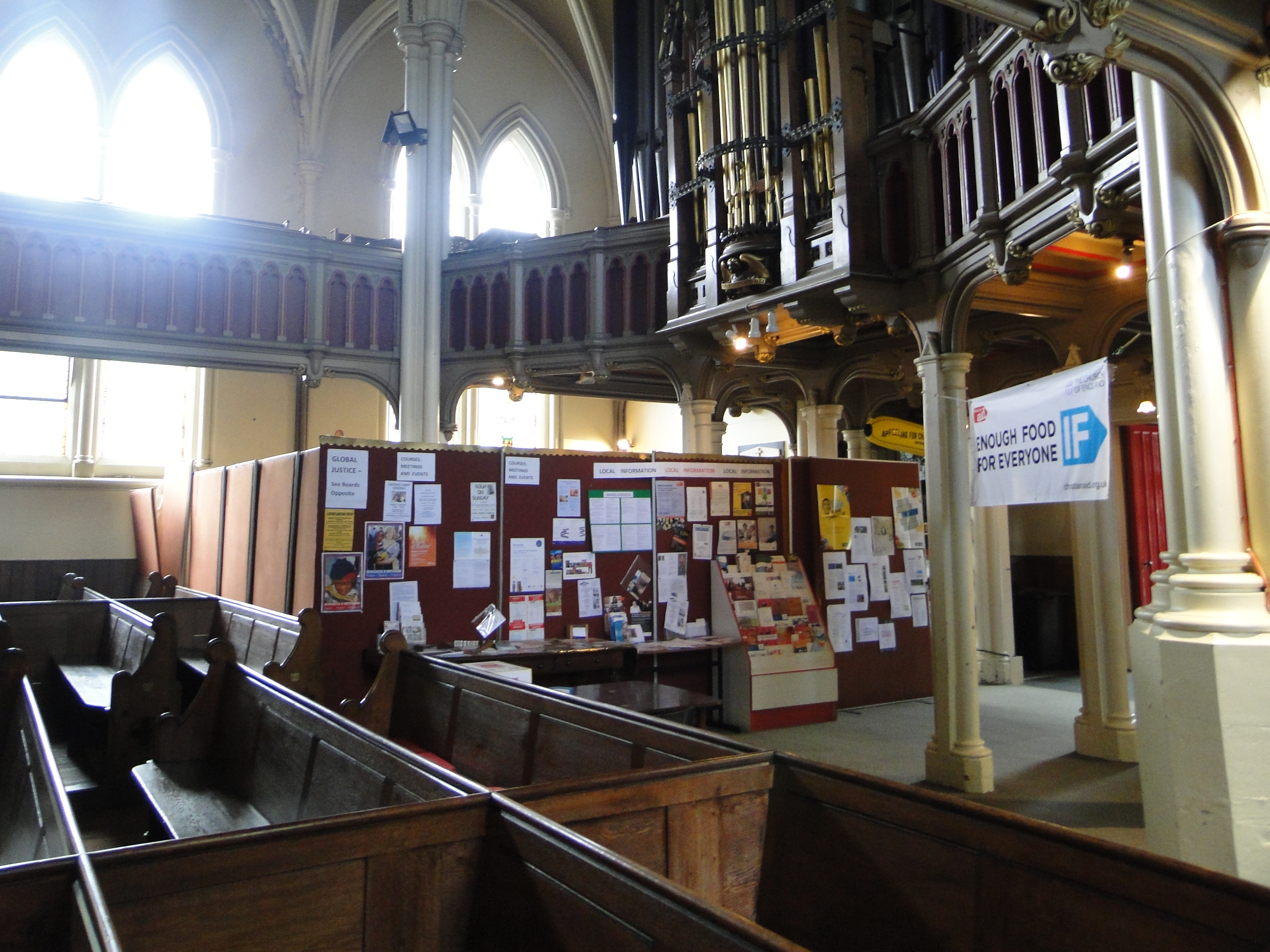

Hello, I hope you are well and I thank you for being able to make contact.
I am browsing the web ref sketches and paintings completed by J W Carmichael relating to the Newcastle to Carlisle Railway as I have in my possession one completed by JWC but am unsure of where it was completed It may be in the Blenkinsop area but I am unsure. I have a copy of a book showing his work (Taken from a folio book produced at the time) but believe there were 2 volumes taken from this book and I cant get access to the send one if it exists… If You have any copies of his sketches I would appreciate any showing the areas around Gilsland (Rose Hill)and appreciate any information you may be able to offer Best Regards Ron
Dear Ron, That sounds fascinating. The book based upon his drawings of the Newcastle and Carlisle Railway is in the catalogue of the British Library as “Views on the Newcastle and Carlisle Railway”, from original drawings by J.W. Carmichael, with details by J. Blackmore (Newcastle: Currie & Bowman, 1836). It was republished in 1969 as “Views on the Newcastle and Carlisle Railway”, from drawings by J.W. Carmichael, text by John Blackmore, with an introduction by Frank Graham (Newcastle: Frank Graham, 1969). You can often pick this up in second hand bookshops or in Northumberland libraries. It is also available on line as a Nabu Public Domain Reprint – while the text is easy to read and the main plates are quite well reproduced, the title pages have reproduced very badly. Quite a few of his illustrations are reproduced in Fawcett, Bill, “A History of the Newcastle & Carlisle Railway, 1824-1970” (Newcastle: North Eastern Railway Association, 2008).If you want to send me a photo of your etching, I will happily have a look for you. Best wishes, Peter
Hello Peter,
Thank you for your kind response,
I would be pleased to send you the photo as requested but am still like Geo Stephenson and STEAM when it come to attaching photos etc so my home email address is ronparkin@gmail.com and if you care to re contact, I could send them using my home email address as I know how to do that.
Many Thanks, Ron.
With regard to your comment that this parish was the first to have the Communion service celebrated by a woman. As an undergraduate in 1979 I played the organ for a service one Sunday morning in the Lent Term when a lady deaconess attempted to celebrate the communion service – could this then be one of the first parishes to have had lay celebration of the eucharist in the C of E ? At this time there was a Director of Music and an excellent choir both relegated only to choral evensong – but the music was good.